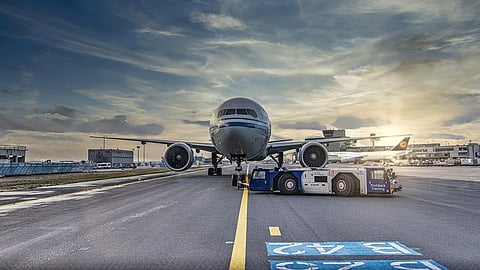

As airline executives anticipate yet another record-breaking summer for air travel, a fresh study conducted by Boston University School of Public Health (BUSPH) and Oregon State University has determined that exposure to even moderate levels of aircraft noise may interfere with sleep, adding to a mounting body of research on the detrimental health consequences of environmental noise.
Reported in Environmental Health Perspectives, the research discovered that individuals exposed to airplane noise levels as low as 45 dB were prone to sleeping less than 7 hours per night. To provide context, a whisper registers at 30 dB, a library ambiance at 40 dB, and a standard conversation at home at 50 dB.
Sufficient sleep is crucial for maintaining overall health and well-being, encompassing everyday physical and mental performance. Inadequate sleep is linked to heightened chances of cardiovascular disease, depression, diabetes, cancer, and many other health problems. Health professionals recommend that most adults aim for seven to nine hours of sleep nightly to ensure healthy functioning.
This investigation marks the initial comprehensive assessment of aircraft noise and sleep duration that acknowledges the obstructive impacts of numerous environmental exposures within communities, such as greenery and light at night (LAN).
Despite the prevalence of exposure to aircraft noise for numerous individuals, little is understood regarding the health consequences of aircraft noise, primarily in the United States, according to Matthew Bozigar, the lead author of the study and an assistant professor of epidemiology at OSU, and Junenette Peters, the senior author of the study and an associate professor of environmental health at BUSPH.
Peters notes, "This research aids in comprehending the feasible health mechanisms by which aircraft noise could operate, such as interfering with sleep."
Dr. Peters, Dr. Bozigar, and colleagues from BUSPH, Brigham and Women's Hospital, Harvard Medical School, and Harvard T.H. Chan School of Public Health examined airplane noise exposure and self-reported sleep disturbance across over 35,000 individuals residing near 90 major US airports for the study. Participants were chosen from the Nurses' Health Study (NHS), a continuous, forward-looking investigation of US female nurses who have completed biennial surveys since 1976.
The research team evaluated airplane noise levels every five years between 1995 to 2015, examining two metrics: a nighttime estimate (Lnight) that encompasses airplane noise during sleep, and a day-night estimate (DNL) that represents the average noise level throughout a 24-hour period and accounts for a 10 dB adjustment for airplane noise during the night when background noise is low. The DNL serves as the primary metric for FAA policies on aircraft noise, with the threshold for significant noise impacts being above DNL 65 dB. The team connected these measurements at various thresholds with the geocoded residential addresses of the nurses.
Following the adjustment for a range of factors, including demographics, health behaviors, comorbidities, and environmental exposures such as greenery and light at night (LAN), the findings revealed that the likelihood of sleeping less than seven hours increased as airplane noise exposure escalated.
Additionally, the study found that nurses residing on the West Coast, near a significant cargo airport or a large body of water, as well as those who reported no hearing loss, were more inclined to experience short sleep durations.
Bozigar comments that "We found surprisingly strong relationships for particular subgroups that we are still trying to understand," and further adds, "For instance, there was a relatively strong signal between aircraft noise and both dimensions of disrupted sleep, short sleep duration, and poor sleep quality, near major cargo airports. There is likely more going on to this story, as cargo operations tend to use larger, older, heavily laden, and therefore noisier aircraft that often fly through the nighttime hours. And the quantity of cargo shipped by air has been steadily increasing over the last couple of decades, possibly linked to more e-commerce. If the trends continue, it could mean more aircraft noise impacts to more groups of people."
Although the study results indicated a clear correlation between airplane noise and sleep duration, the researchers did not observe a consistent relationship between aircraft noise and the quality of sleep.
Dr. Bozigar emphasized that although a single study is insufficient to recommend policy changes, their study of around 90 US airports revealed a correlation between aircraft noise and inadequate sleep. He also noted that future research could fill in current gaps in knowledge by including additional demographic groups and more detailed metrics of aircraft noise, as well as measuring sleep through wearable activity monitors. The impact of other common sources of transportation noise, such as from cars and trains, also needs to be determined. (PB/Newswise)
